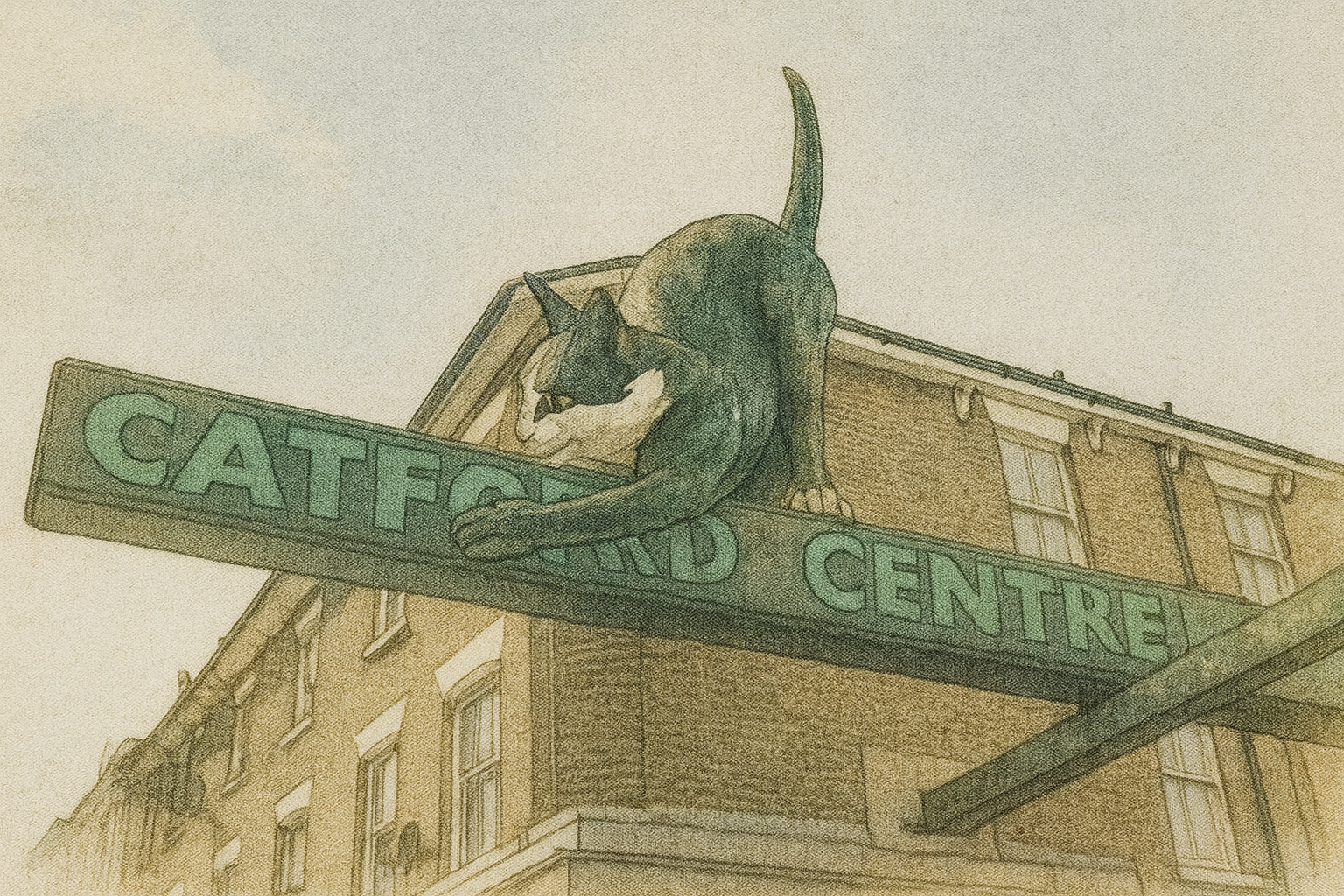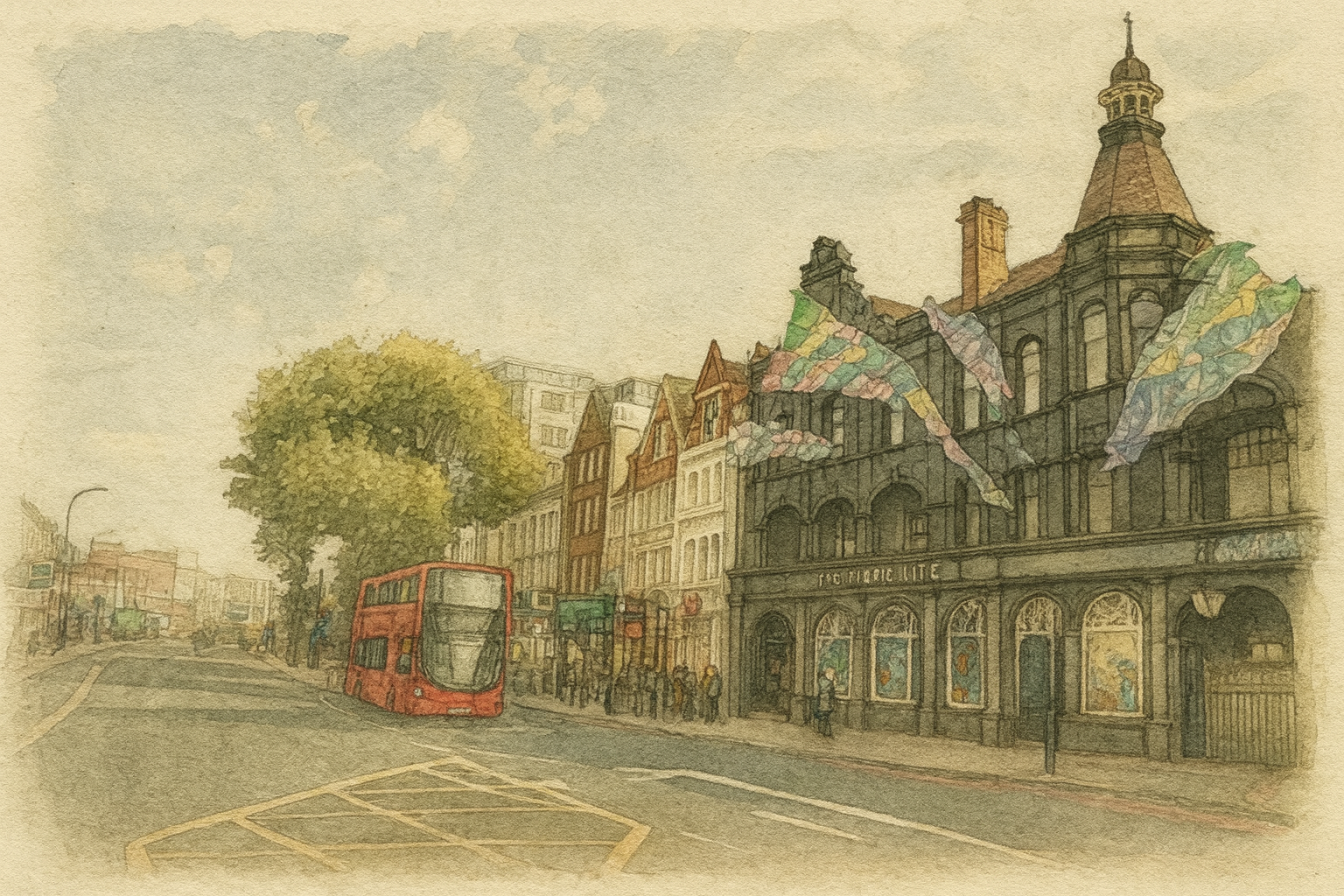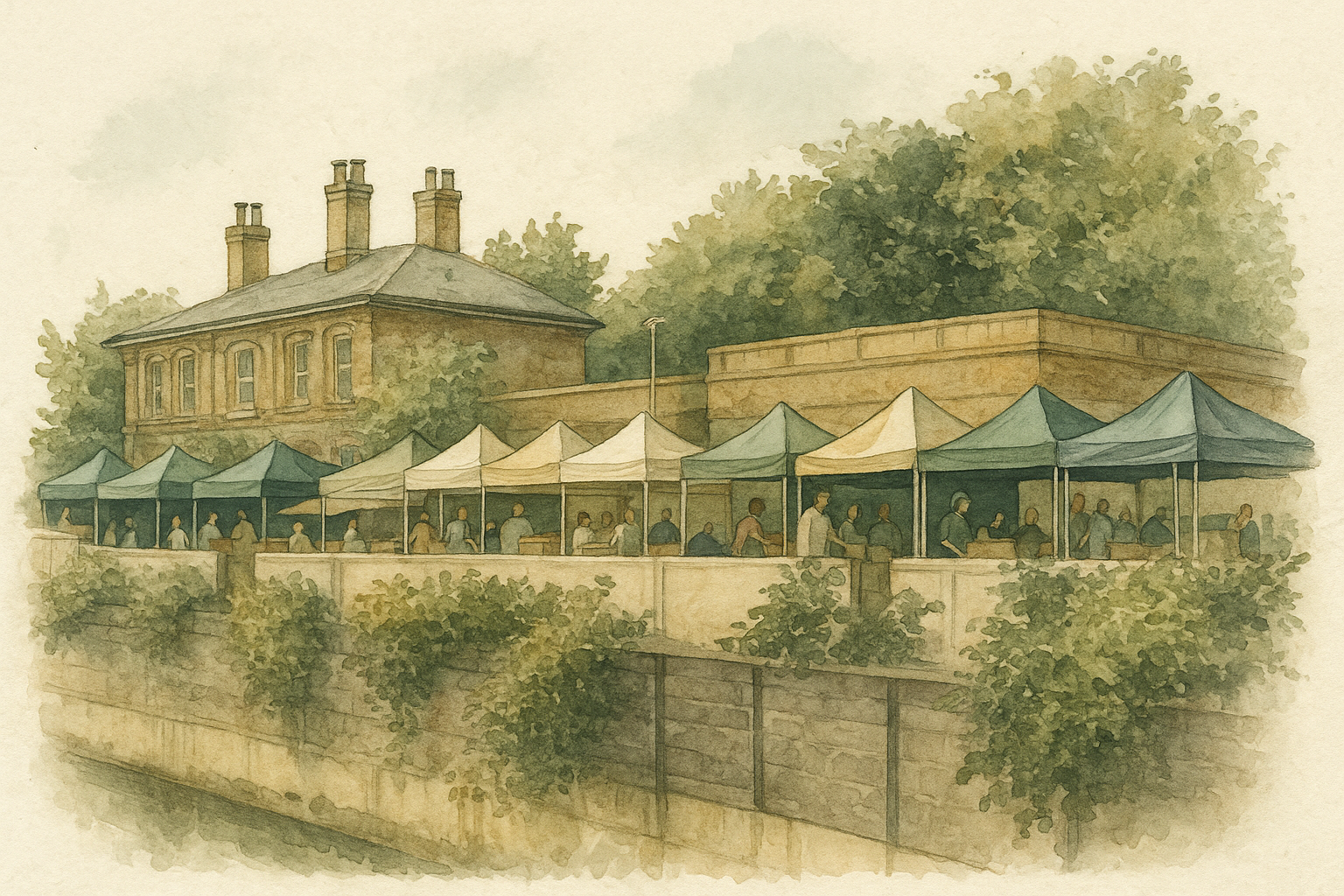Catford, located in the London Borough of Lewisham, is a vibrant and diverse neighbourhood that blends historic charm with modern regeneration. Known for its iconic cat statue, bustling Broadway Theatre, and a growing food scene, Catford has long been a hub for community life in South East London. With excellent transport links into Central London, access to green spaces such as Mountsfield Park, and a wide mix of housing, Catford appeals to families, young professionals, and investors alike. As regeneration gathers pace, Catford is positioning itself as one of London’s most exciting up-and-coming areas.
History & Regeneration
The name “Catford” is believed to derive from a ford where cattle once crossed the River Ravensbourne, which runs through the area. The earliest reference to Catford appears in medieval records, but it remained largely rural until the late 19th century. The opening of the railways in the mid-1800s marked a turning point, as farmland gave way to terraced housing to accommodate London’s growing population.
During the late Victorian and Edwardian periods, Catford expanded significantly, with rows of terraced homes, semi-detached houses, and civic buildings constructed to serve the growing community. By the early 20th century, Catford had become an established suburban centre, boasting shops, theatres, and cinemas. The Broadway Theatre, built in 1932 in striking Art Deco style, became a cultural landmark and remains one of South London’s most notable theatres.
Catford saw post-war redevelopment, with the construction of larger housing estates to replace bomb-damaged buildings and to meet demand for social housing. The 1960s and 1970s brought a mix of modernist architecture, including high-rise blocks and the distinctive shopping precinct dominated by the Catford Centre and its famous giant fibreglass cat statue.
In recent years, Lewisham Council has prioritised Catford for significant regeneration, with plans to revitalise the town centre, improve public spaces, and deliver new housing. The Catford Masterplan aims to balance modern development with preserving the area’s cultural and community identity. This blend of history, diversity, and regeneration makes Catford a fascinating place to live.
Property Market & Architecture
Catford offers one of the most diverse housing markets in South East London, making it attractive to a wide range of buyers. The area combines period homes, post-war housing, and new developments, each with their own quirks and community feel.
Victorian & Edwardian Terraces: Streets such as Inchmery Road and Canadian Avenue feature handsome period homes with high ceilings, bay windows, and original features. These houses, often with generous gardens, are highly sought after by families.
1930s Semi-Detached Homes: Much of Catford’s residential landscape is made up of 1930s family houses, particularly around Corbett Estate. These homes are known for their spacious layouts, large gardens, and strong community spirit.
The Corbett Estate: Built by Archibald Corbett in the early 20th century, this conservation area is renowned for its tree-lined avenues and attractive uniform houses. It remains one of Catford’s most desirable addresses.
Post-War Housing: Catford is home to a number of council estates and mid-century builds, offering more affordable options for first-time buyers. While some blocks are utilitarian, others benefit from solid construction and convenient locations.
New Developments: Regeneration has brought modern apartment complexes, particularly near Catford and Catford Bridge stations. These attract young professionals who value convenience and contemporary living. Future development as part of the Catford Masterplan will further expand these options.
Each micro-neighbourhood offers its own lifestyle benefits. The Corbett Estate appeals to those seeking heritage and community, while riverside spots near Ladywell Fields provide green tranquillity. New apartments around the town centre suit commuters and investors. We’ve advised buyers and sellers across all these developments and are always happy to share insights that go beyond the listings.
Overall, Catford provides a balance between affordability and connectivity, with a strong pipeline of regeneration promising capital growth for homeowners and investors alike.
Local Amenities
- Catford Broadway Theatre – A Grade II listed Art Deco landmark offering plays, comedy, and community events.
Catford Shopping Centre – Central retail hub with supermarkets, independent shops, and local services.
Mountsfield Park – A large, leafy park with playgrounds, sports facilities, and regular community festivals.
Annual Events & Traditions
Catford is rich in cultural activity and community spirit.
- Catford Food Market – Monthly event showcasing street food and artisan produce.
Catford Arts Trail – Annual celebration of local artists and makers.
Lewisham People’s Day – A long-running festival in nearby Mountsfield Park featuring music, food, and family activities.
Best Places to Eat & Drink
- Levante Pide – Known for authentic Turkish cuisine.
Mekan Restaurant – A popular choice for Mediterranean and Middle Eastern dishes.
Ninth Life – Quirky pub with eclectic décor and live music.
Sapporo Ichiban – Local favourite for Japanese food.
The Catford Constitutional Club – Vibrant pub in a converted historic building.
Museums & Parks Nearby
- Mountsfield Park – Spacious park hosting festivals and outdoor cinema.
Ladywell Fields – Scenic riverside park with cycle paths, sports pitches, and nature areas.
Riverview Walk – Tranquil green corridor along the River Ravensbourne.
Transport Links
- Rail – Catford and Catford Bridge stations provide services to London Blackfriars, Charing Cross, London Bridge, and Cannon Street.
Bus – Excellent connections across Lewisham, Greenwich, Bromley, and into Central London.
Cycling – Cycle routes through Ladywell Fields and towards Lewisham connect Catford with wider London.
Roads – Easy access to the South Circular and A21.
Culture & Community
Catford’s cultural identity is bold and eclectic. The Broadway Theatre anchors the performing arts scene, while the Ninth Life pub provides a hub for live music and creative events. Street art, independent coffee shops, and multicultural food offerings all add to the neighbourhood’s dynamic feel. With strong grassroots initiatives such as the Catford Arts Trail and thriving community markets, Catford continues to establish itself as a cultural centre within Lewisham.
Schools & Education
- Holbeach Primary School – Good (Ofsted).
Rushey Green Primary School – Good (Ofsted).
St Dunstan’s College – Independent school offering education from nursery to sixth form.
Conisborough College – Good (Ofsted).
Playgrounds
- Mountsfield Park Playground.
Ladywell Fields Play Areas.
Riverview Walk Nature Play Spots.
Running Clubs & Fitness
- Gyms: PureGym Catford, Energie Fitness, and The Gym Group Catford.
Running Clubs: GoodGym Lewisham – combining exercise with community volunteering.
Triathlon & Endurance Clubs: Greenwich Tritons – accessible from Catford, offering swimming, cycling, and running training.
Parkrun: Hilly Fields Parkrun – a free, friendly 5k event held weekly.
Basketball: Courts available in Mountsfield Park and Ladywell Fields.
Catford’s mix of green spaces, river routes, and sports facilities makes it ideal for active lifestyles.
Why Live in Catford?
Catford offers affordability, connectivity, and huge growth potential. It is one of the few areas in South East London where buyers can still find spacious period homes and family-friendly houses at relatively competitive prices. With the Catford Masterplan driving investment and regeneration, the area is set for long-term capital growth. Its cultural vibrancy, strong schools, and quick links into Central London make it a practical and attractive choice for both homeowners and investors.
Buying, Selling & Letting Advice
Catford continues to attract a mix of buyers, from first-time homeowners to families and investors. Buyers should watch regeneration hotspots around Catford town centre, where new homes and public spaces are being delivered. Sellers can take advantage of strong demand for period homes, particularly on the Corbett Estate. Landlords benefit from steady rental yields driven by professionals and families priced out of neighbouring areas like Forest Hill and Lewisham.
MA-Residential, your trusted estate agent for Catford, Hither Green and SE6 homes



